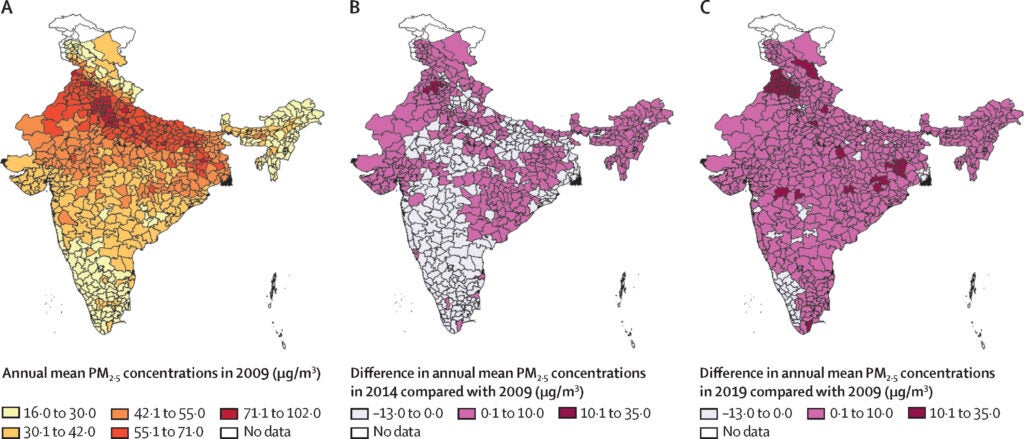Air pollution in India linked to millions of deaths

A new study published today in Lancet Planetary Health found that long-term exposure to air pollution increased deaths by 1.5 million deaths per year in India, when compared to conditions if India met the World Health Organization’s recommendations for safe exposure.
Air pollution consisting of particles smaller than 2.5 micrometers in diameter, PM2.5, can enter the lungs and bloodstream and is a major health risk in India. Researchers have now examined the link between these particles and mortality over a ten-year period (2009-2019). Unlike previous studies, this study was across all of India and used a new model of PM2.5 for every 1x1km of the country.

“We found that every 10 microgram per cubic meter increase in PM2.5 concentration led to an 8.6 percent increase in mortality,” said co-author Joel Schwartz, PhD, faculty member in the Department of Environmental Health at Harvard T.H. Chan School of Public Health. “The increase was even larger for 10 microgram per cubic meter increases in PM2.5 from levels below the Indian guidelines of 40 micrograms per cubic meter.”
“The results show that current guidelines in India are not sufficient to protect health. Stricter regulations and measures to reduce emissions are of utmost importance,” said co-author Petter Ljungman of the Karolinska Institute in Sweden.
“Delhi may get the headlines, but this is a problem all over India, and nationwide efforts are needed. Coal burning electric plants need scrubbers, crop burning needs to be limited, and most importantly, the government needs to recognize this as a major issue,” said Dr. Schwartz.
The study also highlights that the entire population of India lives in areas where PM2.5 levels exceed WHO guidelines. Hence 1.4 billion people are exposed year after year to air pollution that can negatively affect health. In some regions, levels of up to 119 micrograms per cubic meter were measured, significantly higher than what both the WHO and India consider safe.
The study is a collaboration between researchers from universities in India, Sweden, USA, Israel and Italy.
Publication: ‘Estimating the effect of annual PM2-5 exposure on mortality in India: a difference-in-differences approach’, Suganthi Jaganathan, Massimo Stafoggia, Ajit Rajiva, Siddhartha Mandal, Shweta Dixit, Jeroen de Bont, Gregory A Wellenius, Kevin J Lane, Amruta Nori-Sarma, Itai Kloog, Dorairaj Prabhakaran, Poornima Prabhakaran, Joel Schwartz, Petter Ljungman, The Lancet Planetary Health, Published December 2024. DOI: 10.1016/S2542-5196(24)00248-1


